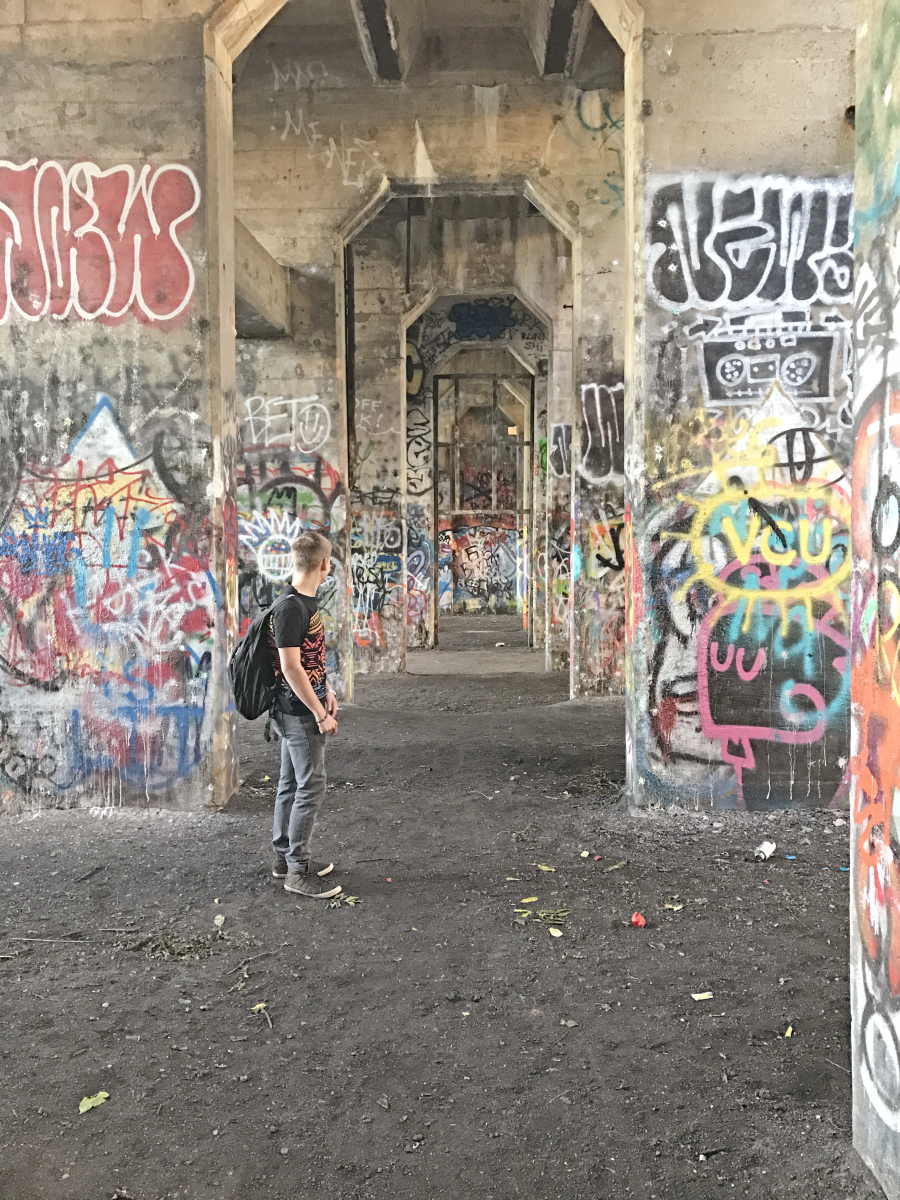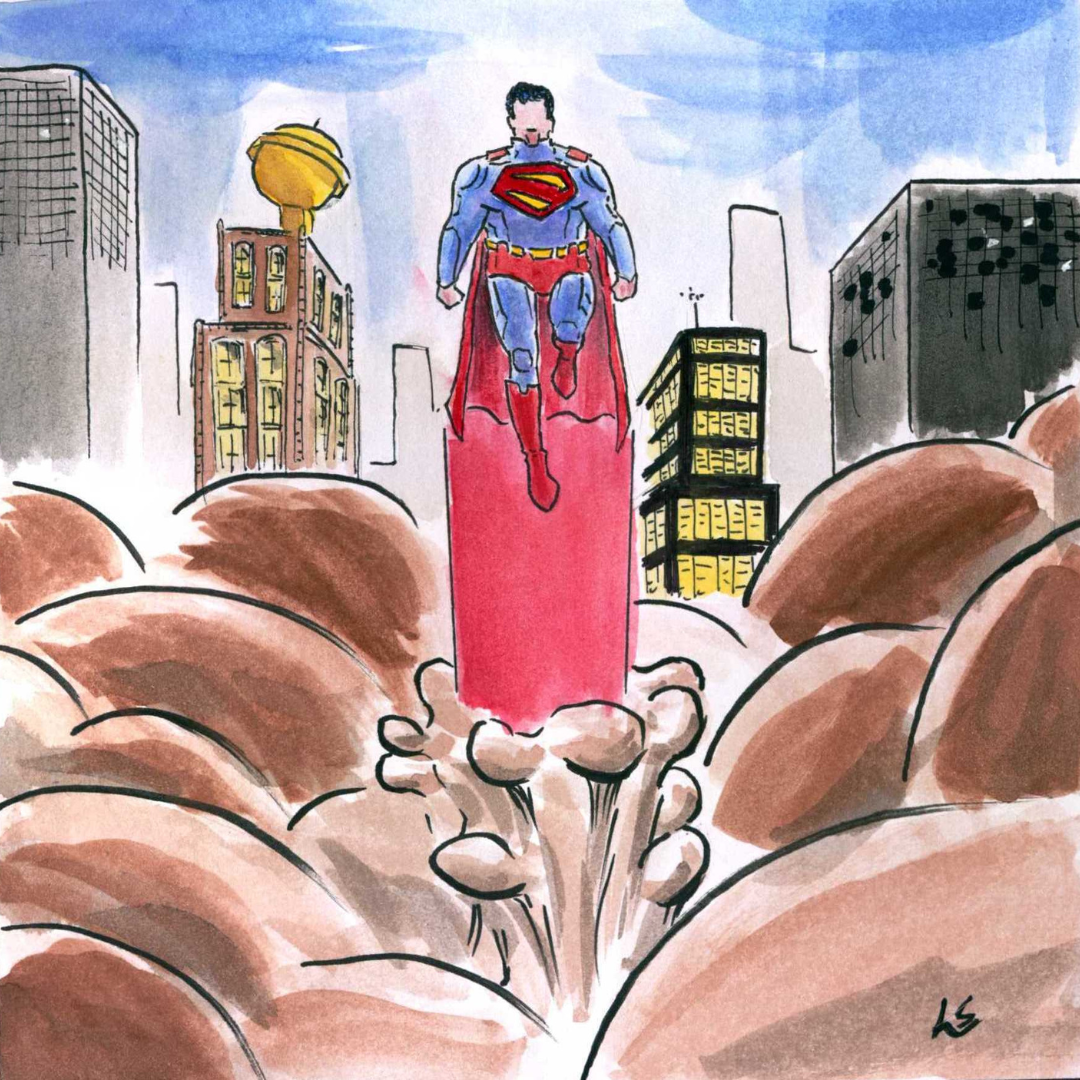A trip to Philadelphia’s street art paradise
by Max Rosenfeld, ’20
Special to The Hawk
Located in the ruins of what used to be the hub of Philadelphia’s coal trade, Graffiti Pier at Pier 18 is vibrant, grungy, peaceful, dangerous, and completely captivating.
Pier 18 is in the Port Richmond section of Philadelphia, north of Center City. For decades, only locals were cognizant of this hidden gem, but social media has brought Graffiti Pier’s rundown elegance to the masses. The art is provided by locals who aim to depict the trials of modern times, and it is absolutely hypnotizing.
I visited Graffiti Pier with Connor Mirabella, ’20, who has spent his entire life in Philadelphia. He told me that a beautiful mural memorializing Alton Sterling was drawn on a pillar here just two days after Sterling was shot and killed in Baton Rouge, La. in July 2016. The mural is gone now, covered by fresher versions of street-level art. Each piece that is painted at Graffiti Pier has a short shelf life, as artists constantly update the pier’s surface.
Mirabella and I took an Uber from Saint Joseph’s University campus to Graffiti Pier. Our driver, who told us he grew up in the area, knew exactly where we were headed. He dropped us off at a parking lot that led toward the Delaware River. Cautious but confident, we travelled down a beaten path running alongside the dirty water; the kind of path that invited us to continue walking.
Graffiti Pier was not the lavish collection of organized expressions that I had expected. This place was real.
One painting in particular caught my eye. It appeared to be a hybrid of a dog and bunny. The creature’s facial expression, captured perfectly by the artist, matched the tone of Graffiti Pier as a whole: Oddly and comfortably mystifying.
Another piece was placed perfectly on one of the many pillars, blending in with most of the surrounding art. The small lettering hid inside a cloud, but delivered an eerie message upon closer examination.
“Look behind you,” it urged in sharp, red letters. Without hesitation, I turned.
As my eyes wandered across the landscape, it became quite clear that art is not the only draw to Graffiti Pier; evidence of diversions are layered on the ground.
The Pier is littered with the types of materials one would expect to find in an out-of-the-way teenage hot spot. Beer and liquor bottles, lighters, cigarette packs, bongs, and other marijuana-related paraphernalia were scattered around. This assortment of items, too, is a collection of art.
We came across a group of 20-somethings in broad daylight, surrounding a fire, passing around a bong.
“If you’re a stoner in the Philadelphia area, you know about Graffiti Pier,” Mirabella said. “For people like that, it’s just a place to unwind.”
I suppose the venturesome essence of Graffiti Pier is part of its allure. At Graffiti Pier, it’s almost as if drugs and alcohol are the nature of the experience. In a way, it’s charming.
Mirabella advised that we go during the day because the more dangerous crowd comes out once the sun goes down. Heroin users are like vampires here, he said.
All too quickly, Graffiti Pier has become maddeningly mainstream. There have been upwards of 5,000 Instagram posts tagged at Graffiti Pier, a lot of attention for a spot that’s supposed to be kept on the down-low.
Graffiti Pier’s popularity seems to be caused by its precarious reputation. But unlike the Kardashians or cat memes, Graffiti Pier has maintained its initial charm despite its growing acclaim. My fear is that this may soon change.
I almost wish I had never heard of it. Almost.














































